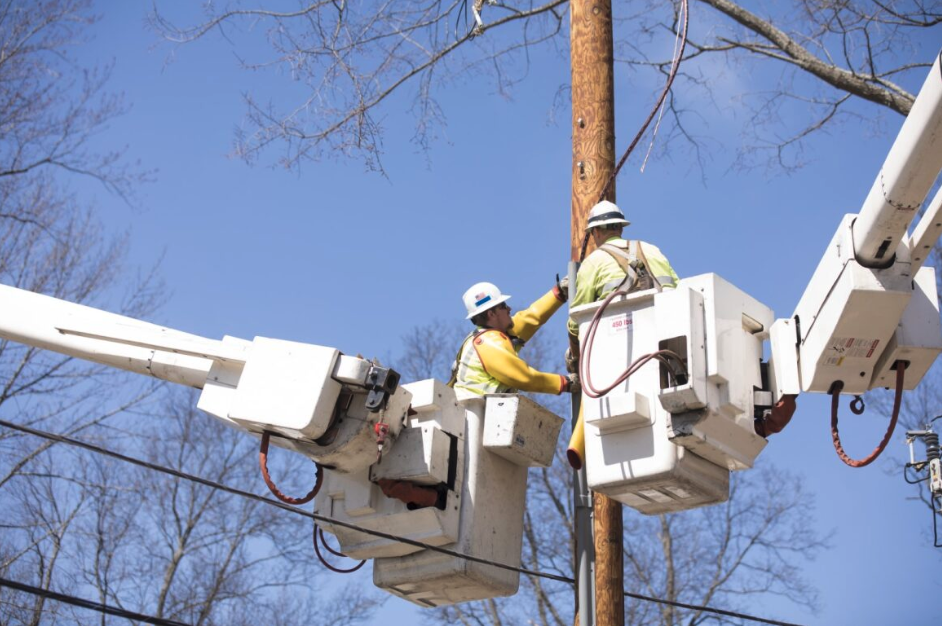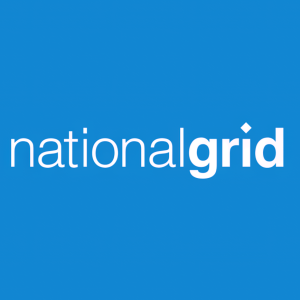National Grid Submits Final 'Future Grid' Plan To Empower Massachusetts’ Smarter, Stronger, Cleaner and More Equitable Energy Future
WALTHAM, MA / ACCESSWIRE / February 14, 2024 / National Grid
Updated 1/30/2024
- Increases capacity of the distribution grid by 1 GW by 2030 to support building and vehicle electrification, including enabling 492,000 more EVs and 84,000 more electric heat pumps.
- Expands system capacity by nearly 3 GW by 2035, to support the connection of 3 GW more solar and storage to the grid and EV charging along Mass Pike.
- Enables more than 31.3 million metric tons of greenhouse gas emission reductions.
- Leverages energy efficiency, distributed energy resources and demand response to manage costs and defer investments through innovative non-wire alternative (NWA) solutions.
- Proposes a program offering to avoid costs and enhance resiliency for income-eligible customers through use of batteries to create a virtual power plant (VPP).
- Commits to increased stakeholder engagement and outreach, with a focus on environmental justice communities, through the launch of a new Equity and Environmental Justice Policy and Stakeholder Engagement Framework and Community Engagement and Stakeholder Advisory Group.
- Supports more than
$500 million in increased incremental economic activity and 3,900 jobs by 2030, and$1.1 billion in increased incremental economic activity and additional 8,700 jobs by 2035.
National Grid submitted its Electric Sector Modernization Plan - the Future Grid Plan -- to the Department of Public Utilities (DPU) outlining the critical investments needed in the local electric distribution system over the next five and ten years to meet Massachusetts' nation-leading climate change, clean energy, and equity goals. The proposed investments in the plan are foundational to meeting electric demand that is projected to more than double by 2050, due primarily to the electrification of heating and transportation.
The plan outlines a path to upgrade and expand the capacity of the electric distribution grid, ensure reliability, accelerate the connection of more solar, storage and electrified heating and transportation, empower smart customer choices, and enable a just and equitable transition away from a fossil-based economy. The plan details National Grid's commitment to delivering a fair, affordable, and clean energy future for all its customers while meeting the goals set out in the state's 2050 Clean Energy and Climate Plan (2050 CECP).
The company submitted an initial draft of this Future Grid Plan to the Grid Modernization Advisory Council (GMAC) in September 2023. The plan submitted today incorporates recommendations from the GMAC along with feedback from hundreds of customers and stakeholders from across the Commonwealth.
"We are committed to being at the heart of the clean, fair, and affordable energy transition and meeting Massachusetts' climate and clean energy goals" said Nicola Medalova, chief operating officer for National Grid's New England electric business. "At its core, a transformation of the energy ecosystem is required to achieve these goals and the electric distribution network is foundational to enabling this transformation. It will require new and expanded infrastructure in all communities to meet growing demand, collaboration and engagement among all of society, and an electric network that is fundamentally smarter, stronger, and cleaner than today."
A Focus on Smarter, Stronger, Cleaner Energy Goals
Meeting the Commonwealth's climate and clean energy goals will require the connection of large amounts of new, clean energy resources to the electric grid and the accelerated adoption of clean, electrified technologies by customers statewide. By 2050, the electric distribution system will be the primary fuel network powering the economy and everyday life. Achieving this requires a smarter, stronger, and cleaner grid and policy changes, including permitting and siting reform and anticipatory planning, to enable proactive investments that:
- Empower customers to make the smart, clean energy choices that work for them and accelerate electrification to meet the 2050 CECP goals, which include more than
80% of home heating systems and97% of all passenger vehicles to be electrified; - Create a ready, reliable, and more resilient grid capable of withstanding increasingly extreme weather and enabling the quicker connection of solar, storage, and electrified buildings and transportation;
- Drive increased energy efficiency through new innovations, and support non-wire alternatives (NWAs) to defer or avoid system build-out; and
- Enable a more just and equitable energy future that benefits all.
"Our Future Grid Plan is innovative, customer-centric, and equity-focused to ensure customers and communities across our diverse service area can participate in and benefit from the clean and electrified energy future, while providing high quality service and reliability," said Medalova.
Three Key Areas of Investment
Over the next five years, the company proposes to invest approximately
- Network Infrastructure Investments: To proactively meet significant increases in forecasted loads and capacity needs driven by policies to accelerate electrification and distributed energy resource (DER) deployment, including local solar and storage. This includes upgrading and expanding 13 existing substations and undertaking 14 distribution feeder projects by 2030 to make the system stronger and increase capacity in areas where projected overloads and constraints have been identified.
- Communication and Technology Platform Investments: To leverage data and state-of-the art monitoring systems to make the system smarter and meet evolving customer needs. These technologies will provide two-way information flows for visibility into how grid-connected devices are operating, enable expanded use of NWAs, and leverage technology that can minimize disruptions, including systems that detect outages early and enable the immediate rerouting of electricity.
- Customer Program Investments: To enhance the customer experience and drive adoption of clean, electrified, and efficient energy solutions, including advancement of VPPs. This includes supplementing a program offering supported by a federal grant that provides battery storage for select income-eligible customers that can be used during times of constrained electric load, deferring potential upgrades while increasing resiliency for homes and entire neighborhoods, and expanding managed charging programs for EV drivers that will both save money for customers and reduce peak electric demand on the grid.
The investments proposed in this Future Grid Plan are projected to have an average annual impact of 0.6 percent over the five-year investment period.
Equity, Transparency, and Affordability
Centered on affordability and equity, the plan is designed to meet the state's climate goals based on transparent, data-driven, proactive distribution system planning. The plan is designed to ensure that the most cost-effective solutions are implemented, that customer owned DERs can help meet reliability needs and defer system upgrades, and that economic opportunity is generated for all. The plan does this by:
- Conducting more than 2,000 different scenarios of future electric load growth to prioritize investment plans so the company is building only what is needed, when it is needed to meet the state's climate and clean energy goals.
- Pursuing NWAs to defer investments in new infrastructure and deploying communication and technology platforms that will support the expanded use of NWAs into the future.
- Expanding the company's strategic Workforce Development Program to ensure a ready, available, and skilled workforce, with a focus on creating opportunities for traditionally underrepresented communities.
- Proposing a Community Engagement Stakeholder Advisory Group, in coordination with Eversource and Unitil, to develop an equity-centered community engagement framework to apply to major infrastructure projects proposed before the DPU and/or state's Energy Facilities Siting Board.
- Launching a National Grid-specific Equity and Environmental Justice Policy and Equity Stakeholder Engagement Framework focused on communities that have not historically participated in the project development and/or regulatory processes.
Next Steps
The DPU will review the plan through a formal regulatory process that includes opportunity for public comment and intervention. This process is anticipated to take seven months, after which the DPU will issue an order approving, rejecting, or modifying the plan. The plan, a summary, fact sheet and related information, can be found on the National Grid Future Grid web page.
About National Grid
National Grid (NYSE:NGG) is an electricity, natural gas, and clean energy delivery company serving more than 20 million people through our networks in New York and Massachusetts. National Grid is focused on building a smarter, stronger, cleaner energy future - transforming our networks with more reliable and resilient energy solutions to meet state climate goals and reduce greenhouse gas emissions.
For more information, please visit our website, follow us on X (formerly Twitter), watch us on YouTube, like us on Facebook and find us on Instagram.
Media Contacts
John Lamontagne
Massachusetts
339-223-6077

View additional multimedia and more ESG storytelling from National Grid on 3blmedia.com.
Contact Info:
Spokesperson: National Grid
Website: https://www.3blmedia.com/profiles/national-grid
Email: info@3blmedia.com
SOURCE: National Grid
View the original press release on accesswire.com







